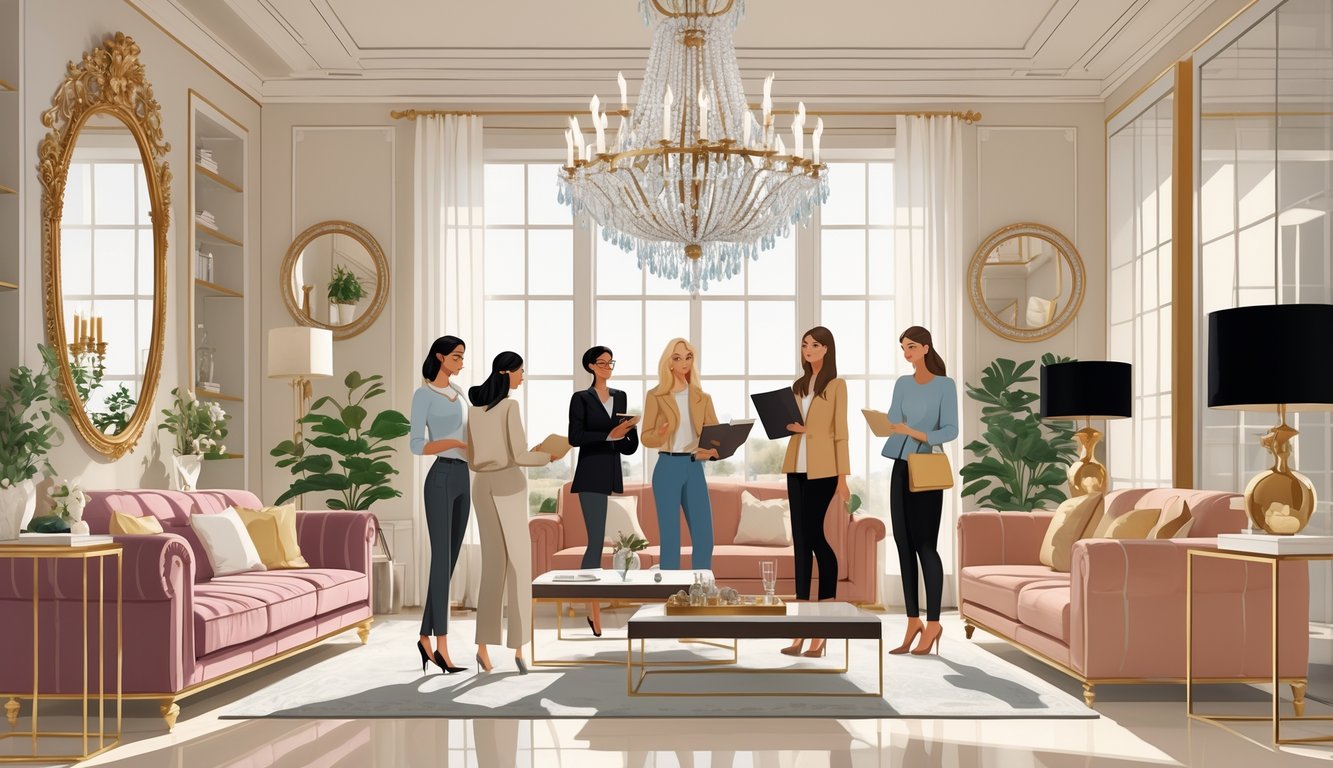
Spotting the Difference: Decor Dupes vs. Counterfeits
You’d think everyone could spot the difference, but honestly, sometimes I can’t. Home décor hashtags blur the lines—dupe isn’t theft, but what if you can’t tell? Fakes spread everywhere, quietly torching trust. Nobody wants to admit they dropped designer money on something made of sawdust and glue.
Quality and Legality Considerations
Want to spot a dupe? Touch it—preferably not at midnight in bad lighting. There’s no magic label. Most dupes skip logos and branding, just copy the shape. Legal gray area? Massive. As long as it doesn’t steal names or marks, it’s not technically counterfeit (trust-place.com explains the dupe dilemma).
Put real wood next to a feather-light dupe and you’ll feel the difference. Marble vs. printed film? Obvious—once you know. A designer once told me you’d know a fake by the glue smell alone. Counterfeits cut corners—cheap parts, crooked seams, and cracks that show up before your next TikTok binge. And forget warranty. Once you’re burned, good luck getting a “luxury” replacement from a seller who ghosts you faster than your last Hinge date.
Buyer Beware: Recognizing Red Flags
Wrong font under a chair? Run. I once got a “famous” lamp with a European plug in a box labeled ‘Authentic U.S. Original.’ Sometimes you get a “certificate of authenticity”—doesn’t mean anything. Living Luxe Shop’s guide says real stuff uses real materials, not pressed board and plastic gold.
If the branding wipes off with a damp cloth or the color changes in sunlight—bad sign. Counterfeit listings use pixelated photos or crop logos out. That’s when trust unravels. Skip the slick copy, hunt for actual awards, make sure the warranty matches the brand, and bail if the reviews sound like they were written by a blender.
Honestly, telling dupes from fakes is like comparing vegan cheese to burrata—one sort of melts, the other just…exists. Luxury is about trust, reputation, and materials you can’t fake. No dupe lasts forever, no matter how good it looks on TikTok.
The Impact on the Luxury Market

TikTok’s a minefield now—every other scroll is “Chanel dupe” split screens and “Anthropologie dupe” reels multiplying like rabbits. Are people even buying the real thing? Or is everyone filling carts with lookalikes, half the price, all the hype, none of the ramen-for-a-month regret? The luxury market definitely feels it—or maybe I’m just projecting after seeing all those “defensive” brand emails.
Luxury Brands’ Response to Dupe Trends
Hermès isn’t making TikToks about it, but you know they’re sweating. Bain & Company says luxury shrank 1-3% in 2024 after a €1.5 trillion high in 2023. That’s not just “business as usual.” Brands are scrambling. Olaplex even did an anti-dupe campaign (seriously, how many hair masks do people need?). If this keeps up, expect more of that. The panic is real.
Now labels are screaming “authenticity” in every ad. Zara’s “elevated basics” isn’t a coincidence. Luxury brands are suing and showing off quality just to slow the dupe avalanche. But most execs don’t get TikTok, and it shows—bad hashtags, awkward posts. Want to see a CMO sweat? Whisper “viral dupe hashtag” at a tradeshow.
Effects on Brand Loyalty and Consumer Spending
How many times am I supposed to believe I’m “investing” in a legacy piece when three scrolls later, an $89 knockoff winks at me? Loyalty’s losing. Dupe culture killed the old “save up for the real thing” mentality. Customer retention is tanking; fast-cycle dupes break that weird bond people had with their Kartell lamp or whatever.
A friend sent me a pic of her “dupe” rug—looked just like West Elm. Couldn’t tell the difference. People are spending on lookalikes and ditching brand loyalty. It’s not sneaky anymore—whole rooms, even wardrobes, built around alternatives. Brands feel it. And honestly, why drop $1,800 for a table when the $240 dupe fools everyone? Ten years ago, wild. Now? Loyalty’s up for grabs—especially since the pandemic made status more about what you post, not what you own.
Sustainability and Ethical Questions
Couch covers, knockoff lamps, weirdly specific vases—these dupes are everywhere. But honestly, the more I see, the more I wonder who’s getting shortchanged. It’s not just about getting the look for less; it’s that nagging feeling about what’s really behind the bargain.
Are Decor Dupes Greener Than Originals?
So, here’s the thing: I’m doomscrolling at 1 a.m. and—bam—some influencer’s pushing another “eco rattan” chair dupe. Supposedly sustainable? I’m not buying it. Verdant Environmentalist (who, by the way, sounds like they’d compost their own shoes) keeps saying swapping pricey vintage for $50 knockoffs doesn’t exactly shrink your carbon footprint. If anything, these cheapo versions just use more plastic, ship from who-knows-where, and basically scream “landfill in 6 months.” Shipping a polyester pillow from three countries just to flop on my sofa? Please.
The actual researchers—the ones knee-deep in lifecycle studies—won’t shut up about recycled content and energy use. Price tag means nothing. If some luxury brand spends ages sourcing FSC-certified wood for a coffee table, that’s real effort. That $40 MDF dupe? Might as well be kindling. Durability is everything. I keep tossing out “seasonal” decor, and it’s just more junk in the pile. Circle of Fashion’s got a whole rant about dupes making sustainability harder, and honestly, I agree. My trick? I dig through vintage first, then maybe—maybe—I’ll consider a dupe if it won’t end up in the trash by next year.
Impact of Fast Fashion on Home Decor
Fast fashion didn’t just eat our closets—it’s wrecking my living room now. Total déjà vu. I bought this “viral” $15 acrylic table last spring. Looked fancy for, what, a week? Then it warped. Humidity’s a jerk, and I’m not about to run a dehumidifier for furniture. It’s the same endless churn: cheap stuff, quick dump, never recycled. We’re all trapped in this loop—me, you, the planet.
Vice actually nailed it in their piece on dupe ethics. Those $10 Shein knockoffs and TikTok home clones? Built for quantity, not quality. Trends change every five seconds, and here I am, buying whatever the algorithm shoves in my face. And labor? Don’t even get me started. Factories crank this stuff out with zero transparency. It’s fashion’s dirty laundry, but in pillow form, and nobody covers it. No magic fix. I just stopped kidding myself that a “deal” means anything if I’m treating my apartment (and the planet) like a dumpster.